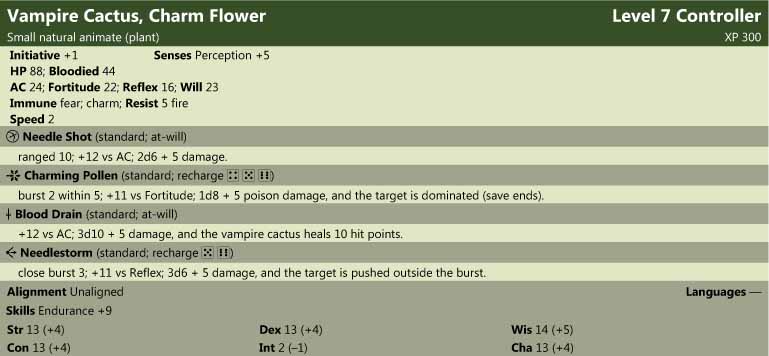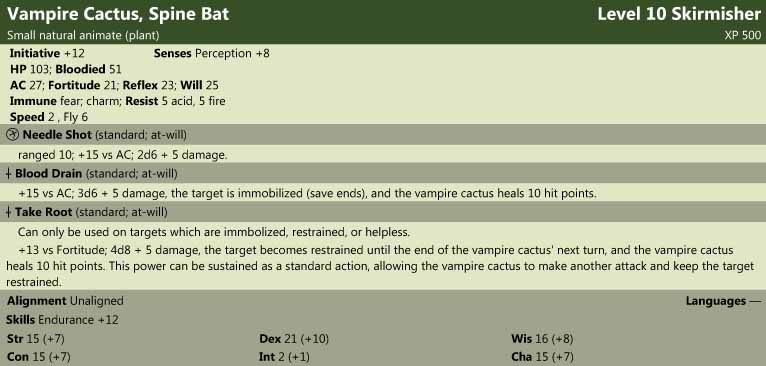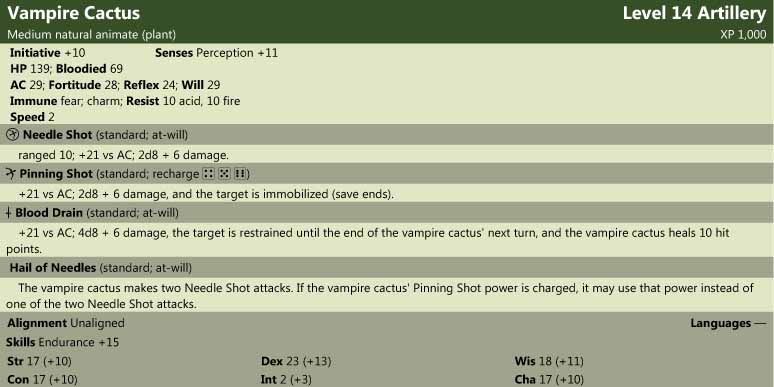Vampiric Cacti
Welcome to Foursaken Feature. As I'm sure you know, Desert Week is in full swing, so if you're expecting some desert-related content in today's article, you guessed right. Or, alternatively, you looked at the article's title, which, admittedly, kind of gives away the gist of the article. So, what makes a cactus vampiric, anyway? An excellent question. Allow me to explain.
The name "vampiric cactus" comes from a handful of similarities these plants have to the undead vampire. These similarities are purely coincidental, and the cacti in question are by no means undead. This serves as small comfort to the weary desert travellers who the cacti kill and drain for nourishment, however.
The primary source of water and nutrients for the vampiric cacti is blood. These plants are specially adapted to draw the maximum possible nutrients out of blood, and can live off it for amazing amounts of time, similar to more mundane cacti. In order to better acquire prey, the cacti developed the ability to move (albeit quite slowly in most cases), as well as to launch their spines through the air and attack their prey.
Vampiric cacti share a number of other similarities with vampires, however. For one, they are always dormant during the day, conserving energy and photosynthesizing. It is only during the night that vampiric cacti can be readily distinguished from their less hostile cousins. Additionally, some species of vampiric cacti possess unique adaptations which eerily mimic the powers of come vampires, such as the ability to charm prey or the ability to take the form of a bat. Included below are three vampiric cacti, but several other species are known to exist, and rumors and legends maintain that a massive, castle-sized vampire cactus can be found at the heart of one or more major deserts.





